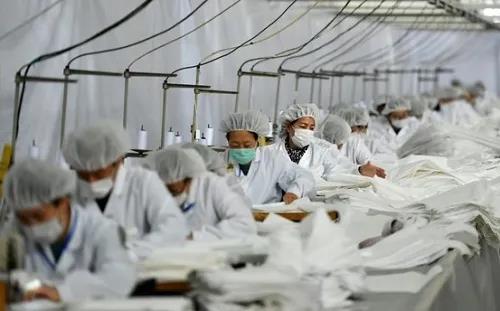India could exploit the opportunity presented by Coronavirus
The Coronavirus (COVID 19) outbreak in China is likely to affect Indian textile and apparel industry, in many positive ways. A recent press release by the Clothing Manufacturers Association of India (CMAI) reveals, the prevailing situation along with uncertainty over the commencement of production is posing a major issue for Indian manufacturers who are dependent on raw material supplies from China. However, it is also compelling global apparel brands to look at India as an alternate manufacturing destination.
On an average, India exports 20-25 million kg of cotton yarn a month to China. Prices of cotton yarns declined 3-4 per cent in domestic market as traders are anticipating a decline in demand from China on account of the prevailing situation. Any further prolonging of the virus will result in a decline in China’s imports of cotton yarn, impacting India’s exports. India will have to divert its surplus cotton yarn to the domestic market, further reducing the price of cotton yarn.
Diversification to increase lead times and costs
India imports synthetic yarns worth $460 million and $360 million worth synthetic fabrics from China annually. It also imports over $140 million worth accessories like buttons, zippers, hangers and needles. With the outbreak of this epidemic, textile factories in India have halted operations since the Chinese New Year. If this situation prevails, Indian garment manufacturers will have to look for alternate sourcing modes including local sourcing, which in turn may increase the cost of their finished goods by 3-5 per cent. Moreover, identifying vendors in such a short time can take a toll on lead times, quality and cost.
China imports large quantities of medical protective gears such as surgical masks and protective clothing from across the globe. This has raised sales of such products in other South East and Western nations to such an extent that its supply is not able to keep up with the demand.
Indian manufacturers fail to emerge as perfect alternative
On January 31, 2020, the Indian government banned exports of all personal protection equipment, including clothing and masks to avoid any shortage in India. However, it soon lifted this ban to help China battle the disease. The government also provided a major relief to Chinese synthetic yarn manufacturers by abolishing the 2.5 per cent of anti-dumping duty levied on Purified Tephthalic Acid (PTA) in order to strengthen the country’s synthetic textiles industry. However, as most of central China and Hubei is at a virtual standstill, importing PTA from China is not a viable option at the moment.
This situation can be advantageous for India as buyers who travel to China from Europe and USA to negotiate with garment exporters can be diverted to the country. One factor that plays in China’s favor is that a number of companies have already produced garment for the Spring/Summer season.
However, if the situation prevails for next couple of months and China fails to control the virus epidemic, buyers will be left with no option but to explore other sourcing destinations. In such a situation, Bangladesh and India stand more than Vietnam, Cambodia or any other South East Asian supplier. On its part, India scores on account of its robust supply chain. However, manufacturers neither have the scale nor the cost competitiveness to present themselves as credible alternate.
Post time: Mar-03-2020







